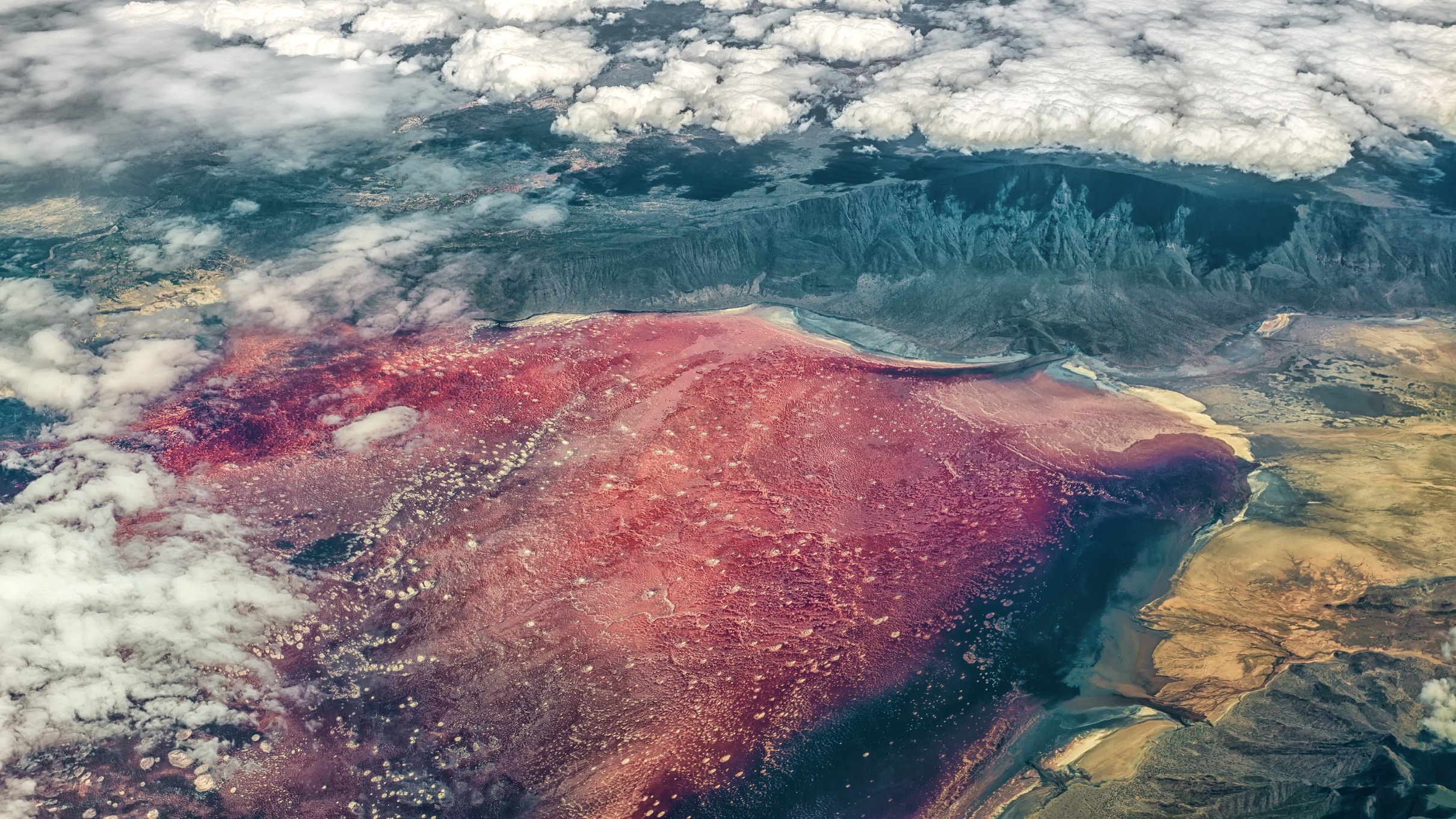
While this lake remains deadly to most, it is still a vital ecosystem. The proposed construction of a hydroelectric plant on the Ewaso Ng’iro River and a soda ash plant on its shores threatens the lake’s salinity and the flamingos. If they spent any longer in the lake, they would have died.Ĭurrently, Lake Natron is under threat. It burned their eyes and skin, but they managed to drag themselves ashore. Everyone survived the crash but they were in the water unprotected. In 2007, a helicopter carrying a group of wildlife videographers wishing to get footage of the flamingos crashed into the lake. People have occasionally survived the lake’s potency. Lake Natron would have saved pharaonic embalmers a lot of work. The ancient Egyptians used sodium carbonate and bicarbonate in the mummification process. Photo: Shutterstockįor most humans, the lake’s qualities are more suitable for the dead than the living. The lake doesn’t quite have that instant effect. The graphically eerie positions looked like the finger of Medusa had really touched them. Wildlife photographer Nick Brandt made headlines in 2013 by staging photos of the mummified remains of the poor creatures around Lake Natron. They drown in the toxic potion, and their outsides and insides calcify. The mirror-like surface tricks them into diving into the red waters for food. Some alkaline tilapia (a member of the cichlid family) can sustain themselves in the cooler parts of the lake.īut to some wildlife, especially birds, Lake Natron can be a death trap. Somehow, a few species of fish, invertebrates, and algae manage to live in the lake. In Lake Natron, their pigment paints the water a striking red. Generally, cyanobacteria carry different pigments. The lake’s salinity has welcomed salt-consuming, halophilic microorganisms called cyanobacteria, which need photosynthesis to survive.


Lake Natron’s deceptively glassy surface. Its average alkalinity is 10.5, its pH surpasses 12, and its water temperature ranges from 40˚ to 60˚C. This concentrated the trona (sodium sesquicarbonate dihydrate) and natron (hydrated sodium carbonate) in the leftover water, creating a highly toxic brine. Since the lake had no outflow and received irregular rainfall, it endured thousands of years of intense evaporation from the heat. During the Pleistocene period, a rare type of lava rich in sodium and potassium carbonates ran down the slopes of the Ol Doinyo Lengai volcano and into the lake. It’s fed by the Southern Ewaso Ng’iro River in Kenya. This shallow but wide lake is just three metres deep but 22km wide. Tanzania has no less than four alkaline lakes, but Lake Natron is the most famous. Lake Natron is a hypersaline and highly alkaline lake located in the eastern section of the volatile East African Rift. In North Tanzania, a unique inland lake turns wildlife to stone. That’s a legend, but a natural wonder in Africa today does just that. Fortunately, they were just a few kilometers (miles) from the coast, so Herbertson and one of the guides rushed to the nearby Maasai village for help.We all know about the Greek monster Medusa, whose deadly gaze turned men to stone. But Lake Natron is 1,040 square meters (11,194 ft2) in size, so they had a long way to go. The water wasn’t deep, so they tried to drag their wounded to shore. Herbertson and other passengers helped them out of the chopper. The pilot broke his leg and suffered severe cuts to his face. To put things in perspective, sea water has a pH. Located close to the Kenyan border, Lake Natron is fed by some springs that are rich in minerals, making the lake highly alkaline, reaching a pH of 9 to 10.5. Cameraman Ben Herbertson recalls that the hot, salty water was burning his eyes. Natron is a compound that occurs naturally, comes from volcanic ash, and is mainly consisted of sodium bicarbonate and sodium carbonate. The entire craft plunged into the corrosive water and caught fire.

But the helicopter’s landing skid hit the lake’s surface.

Its surface was clear and beautiful that morning. area surrounding the lake is in danger of giving way to man-made development. In 2007, a documentary film crew was flying over Lake Natron. Because Lake Natron is brimming with alkaline water, it offers the perfect. So, forget about your swimming lessons and keep your head above the water. If it splashes into your eyes, it could permanently blind you. The water is almost as corrosive as ammonia. No matter what, don’t let the water get into your mouth, nose, ears, or eyes. The bad news is, you know, the hot water will burn you. The good news is that you won’t sink due to the extremely high salt concentration in the water. If you fall into the lake during the wet season, it could be up to 3 m (10 ft) deep.
#Lake natron dangerous skin
The salt will soon dry out the suit’s fabric, and once it touches you, it can burn your skin and corrode away your tissue. When you’re in Lake Natron’s corrosive water, the dry suit can help insulate your skin from the sodium. If an emergency happens, and you have a dry suit, get into it fast.


 0 kommentar(er)
0 kommentar(er)
